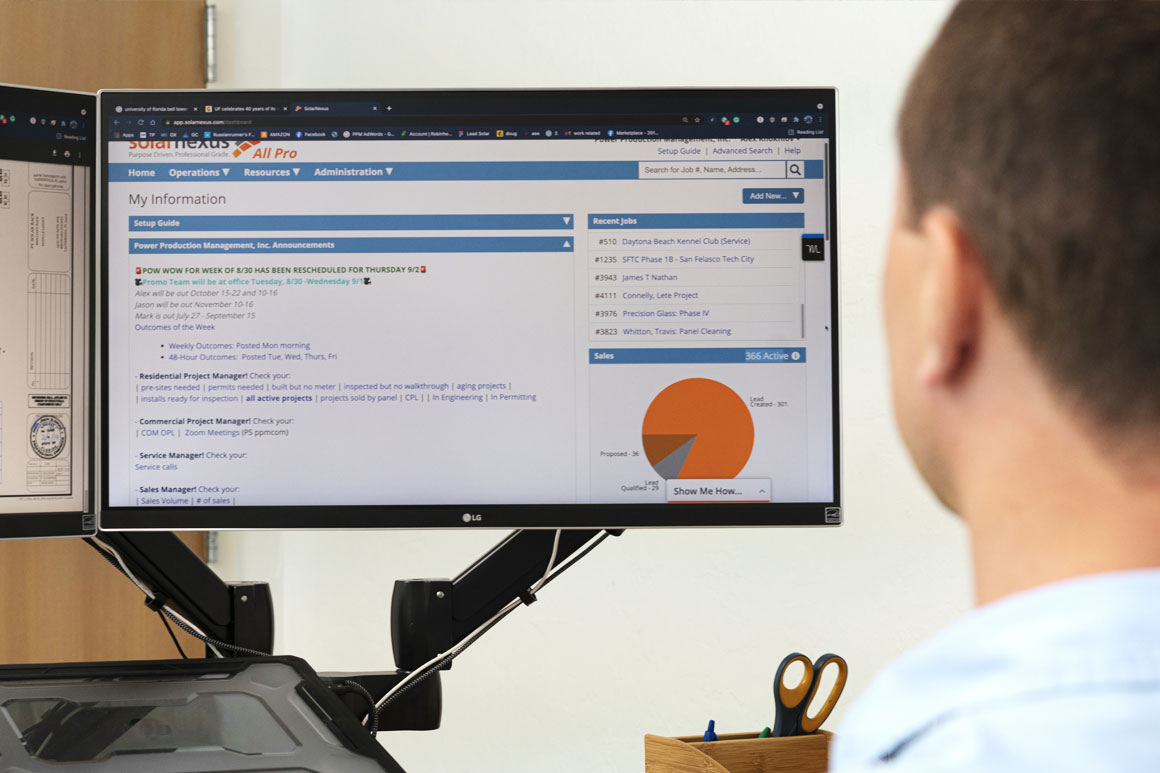By Michael Palmquist
Like it or not, the solar contracting business is as much about information as it is about installation. And we use software as the tools for effectively managing information.
When using physical tools, the equipment and job site characteristics define the tools we use. But for software, the “thing” that the tools work on is information – and information must be created within each software application separately. This fact reduces the benefits of using software because it creates repetitive data entry work that ALSO introduces opportunities for errors. Integrating software can avoid manually re-entering the same contextual information again and again (for example customer, job site, current task and status, etc).
But there’s a fundamental problem with integrations because all software applications differ in:
- the data that they hold
- the format of that data
- what parts of the data can be accessed or updated via an integration.
Implementing an integration can include complex engineering and application administration, making integrations difficult and expensive to implement and maintain, especially if your staff lacks IT expertise. Not to mention having separate logins and learning how to use disparate software interfaces.
To help our contractor clients succeed, SolarNexus’ has integrated the key features of several external software applications directly into our platform – radically simplifying their acquisition and use. Examples include Docusign, GoogleMaps, Nearmap, Genability, GoogleProjectSunroof, and others. Our latest software integration is with Verse – providing AI driven lead qualification and appointment scheduling features that were previously unavailable to all but the largest solar companies.
